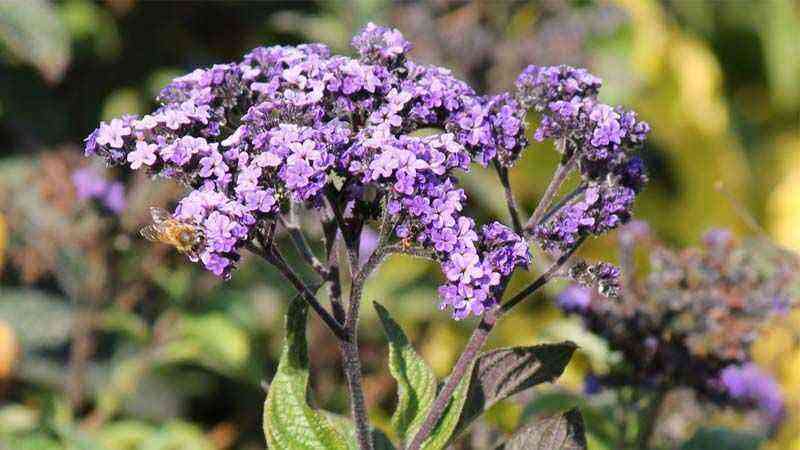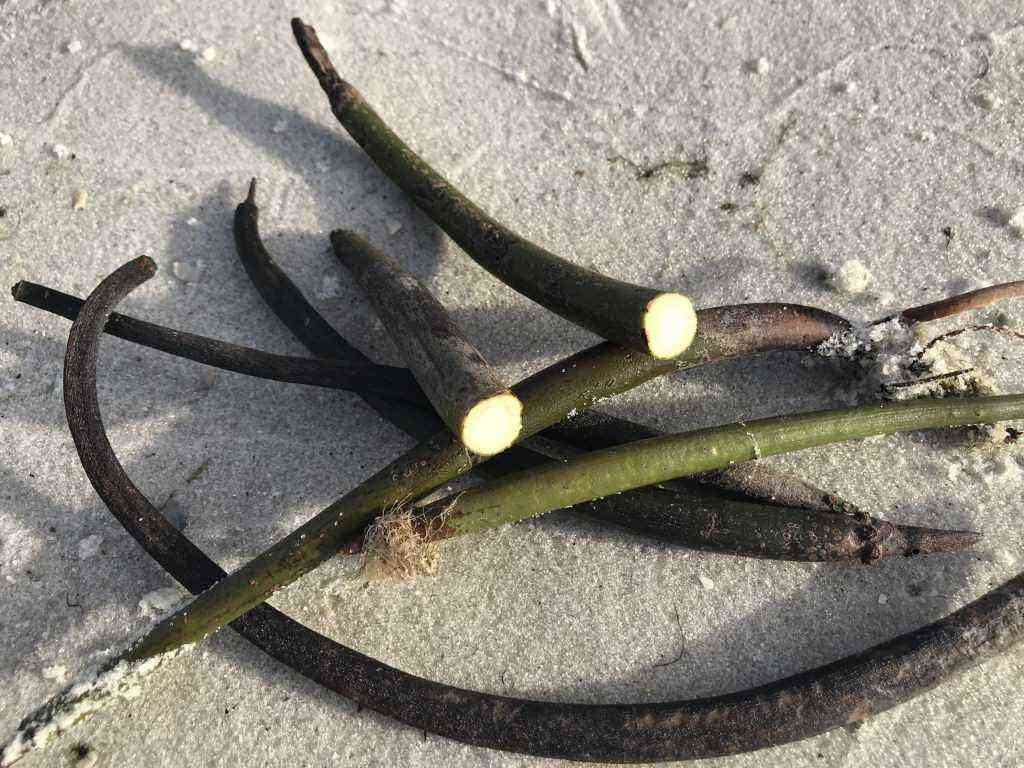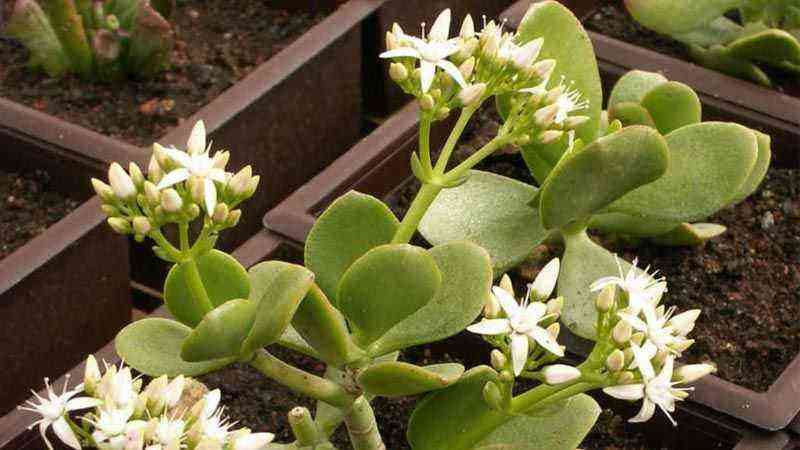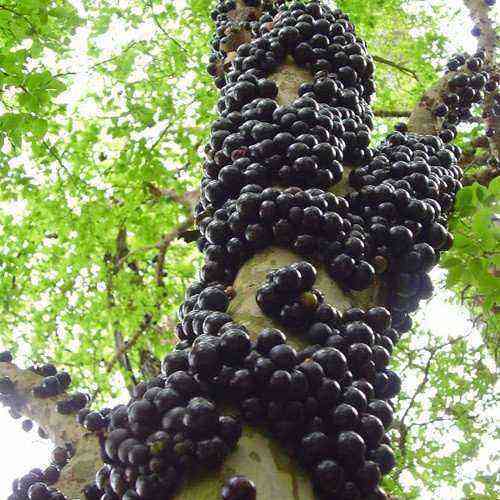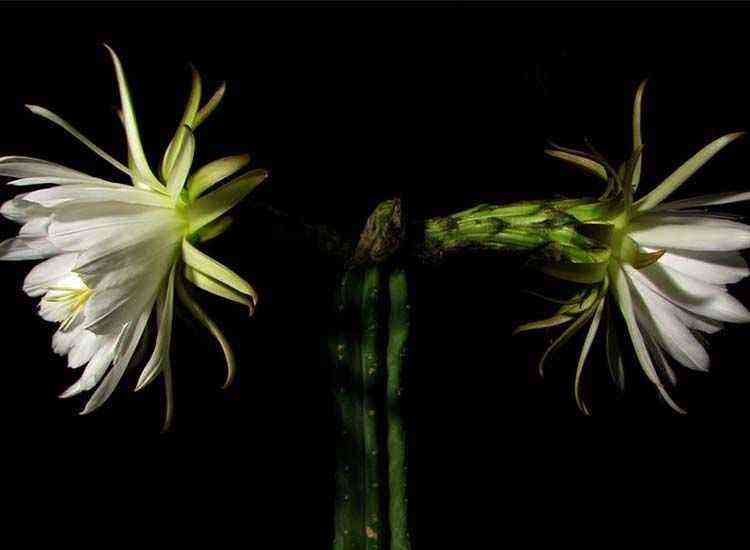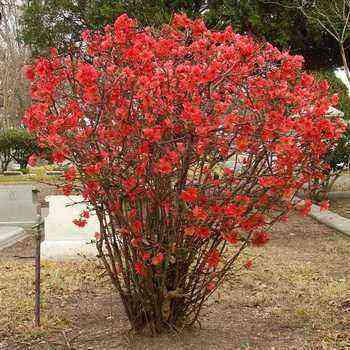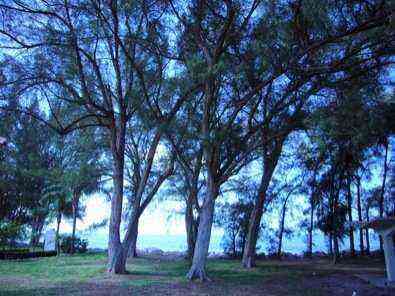Transplanting a thuja to a new place is a very laborious process that has certain limitations. If you strictly follow all the rules, then the tree will take root well in the selected area and will grow successfully, but if you ignore the instructions, you can ruin the culture without a chance of its recovery. Usually this procedure is performed in the spring or fall. Summer time is not suitable for this.


Thuja transplantation should be carried out in compliance with all the rules of agricultural technology
Thuja transplant time
Thuja (Thuja) is considered an unpretentious, frost and drought-resistant plant that feels great not only in summer cottages, but also in urban conditions. This evergreen coniferous tree belongs to the cypress family and is a perennial crop. Plant varieties are represented by tall and low-growing varieties. Their main difference is height. Some species can grow up to 10 meters. The rest of the varieties differ little between themselves and other members of the family. All have a narrow crown extended upward, scaly leaves, small oval cones at the ends of the shoots. Tui is often used in landscape decoration, with their help they decorate personal plots and plant greenery in the courtyards of megacities. The shrub can be grown in any soil, regardless of its composition. When leaving, you should pay attention to crown formation, pruning and transplanting.
The reason for changing the place of the thuja is usually a forced measure that arises in connection with an extraordinary situation. Repotting is usually done in early spring or fall. The process itself is technically simple, but it requires a lot of effort and a responsible approach. Usually, the transplant is well tolerated by conifers; they require careful care only for the first days after its completion. The optimal time to create new conditions for the plant is March, April, September and October.

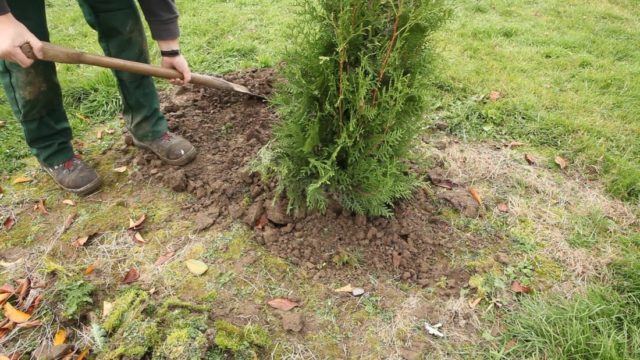
It is advisable that the culture transplant occurs in the spring or early autumn.
Up to what age can you transplant thuja
Thuja can be transplanted to a new place at any age, there are no restrictions on this. It is allowed to move both a young plant up to 5 years old and an adult up to 20-30 years old. The difference in the transplantation process will be only in the bayonet and in the complexity of the process. An adult plant has very large roots, so it will be problematic to ensure their safety. For example, a twofold difference in age means that the weight of the roots of such a thuja will be 8 times higher. Therefore, transplanting a long-lived tree may require not only the participation of male power, but also the use of a special technique.
Comment! If all the recommendations are followed correctly, thuja of any age and variety: “Smaragd”, “Globosa”, “Danica” will never turn yellow or get sick after transplantation.
Characterization
Thuja is a representative of evergreen conifers from the Cypress family. Its other name is life tree. The culture is dioecious. Maybe as a shrub or a tall tree stretching to the sky to a height of 50-70 m. At the same time, the trunk sometimes reaches a diameter of about 5 m. Such thuja can be found on the North American continent and in Asia.
Additional Information. Thuya is a long-liver. It has been growing in the garden for over a hundred years.
The popularity of the life tree is due to positive characteristics, including:
- Frost resistance. The plant grows without problems in the central part of Russia, in the Urals, in Siberia.
- Both a house plant and a garden plant are grown.
- It develops without problems in areas where the air is polluted. If the dacha is located near the highway, the thuja will take it calmly. It grows well in gas-polluted metropolitan areas.
- Easy to trim. The plant produces beautiful hedges or green shapes.
- Thuja, like another representative of the cypress juniper, purifies the air and has a pleasant forest coniferous scent.
- Unlike the juniper, the scaly needles of the life tree are soft, not prickly.
- When autumn comes, miniature elongated cones appear on the thuja. First, their color is light green, then light brown. At the same time, dark cornflower-blue or reddish cones appear on the juniper.
Pay attention! Another close relative of thuja is cypress. You can also distinguish plants by their fruits. Cypress has round green cones with brown veins. Cypress lives in subtropical zones, and thuja grows even in areas with frosty climates.
When thuja is transplanted: in spring or autumn
Shrub transplanting requires compulsory adherence to the time frame. Many gardeners note that it is better to carry it out in the spring, since in the fall there is a chance that the thuja will not have time to take root before frost and will die from the cold. However, some summer residents believe that in the fall the plant takes root better and its root system has time to grow good young roots.
Since each of the options has its own advantages and disadvantages, each gardener chooses the season for changing the site for thuja at his own discretion.
Attention! Autumn replanting should be done in September so that the tree has time to root before the onset of frost.
Thuja transplant in autumn
Autumn transplantation has a big plus in that at this time of the year the tree is able to normalize metabolism and take root. Because with the arrival of cold weather, the bush undergoes active regeneration of the root system and in a short period of time it manages to restore the damaged parts of the processes and build up additional ones. True, time may not always be enough. This means that thuja should be transplanted in the fall in those regions where winter comes closer to November and is not too cold.
If in the region where the thuja transplant is planned, severe climatic conditions prevail, the procedure is performed only in spring
Transplanting thuja in the spring to another place
Spring transplantation of thuja to a new place should be carried out before the beginning of the growing season. Since with the onset of this moment the tree becomes weak and, if transplanted, it will take root for a very long time. This means that the procedure cannot be delayed and it is advisable to carry it out as soon as the last snow melts.
Comment! After the tree is dug up, you should gently shake off excess soil from its roots and wrap them in burlap.
How to transplant thuja in summer
In the summer, only an adult plant can be transplanted. This will be a compromise between the fall danger of freezing and the spring danger of getting sick. But unlike transplanting in other seasons, in the summer it is impossible to guess the behavior of the plant after the manipulation.
A warning! If the young thuja was transplanted in the summer, the plant will take root very poorly.
When thuja is planted in open ground in the summer, the process of its adaptation can take several years.
Site selection and preparation
To properly transplant thuja, you will need to correctly select a site. The comfortable growth of the plant depends on the correct choice of a suitable area.
When deciding on a site, a gardener should rely on the following factors:
- Lighting. Thuja is considered a light-loving culture, which is uncomfortable to grow in the shade. This means that there should be no tall buildings and structures near the selected area. They form a wide shadow, growing in which thuja loses its attractive appearance. However, prolonged exposure to sunlight also adversely affects the well-being of the tree. It is recommended to choose a place where a small partial shade is created at noon.
- The winds. A strong draft can destroy the plant. The selected area should be protected from cold winds. If there are no fences, it is recommended to create a special shelter for the thuja.
- Priming. It is advisable to transplant thuja into marsh or clay soil. However, she does not tolerate nourished soil.

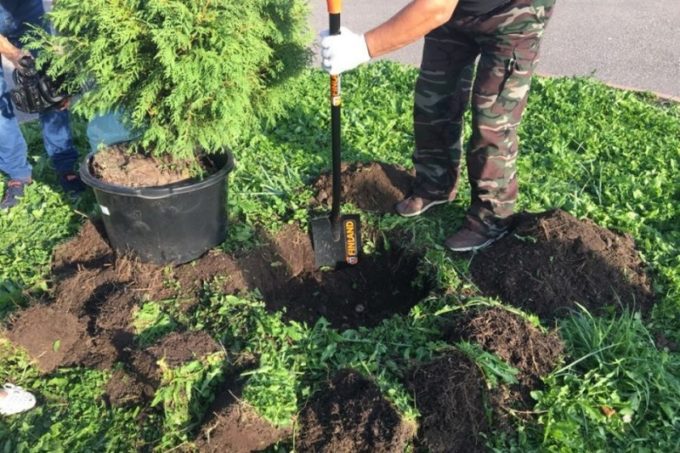
For many plants, groundwater is destructive. However, for thuja, this factor is not critical. It grows well in lands with good drainage. Expanded clay will help to avoid decay of the root system and stagnation of moisture.
Tuyu is also allowed to be planted next to other conifers. If you create a hedge with its help, it will protect the garden area from prying eyes all year round.
How to transplant thuja from the soil
Differences in the procedure for transplanting thuja depend only on the age of the bush. If we are talking about a young plant, then the ground around it is bayonetted in a circle, after which the bush is dug up and transferred to a new place. Transplanting an adult plant is carried out according to the same scheme, but they only begin to bayonet the soil a year before planting.
In addition, transplanting a thuja implies the selection of the correct new place so that the tree is comfortable, you do not have to expend energy, except for the adaptation process. Thuja loves the sun and nothing should block the light from entering it, but at the same time, at noon, it is advisable for the tree to be in the shade so that the needles do not get burned and the bush does not dehydrate. The plant also does not develop well in a draft. It should not be in the new place.
Comment! Transplanting a large thuja, in comparison with a small one, is much more difficult.
Is it possible to transplant an adult thuja
Transplanting an adult thuja is a very troublesome process, but with a strong desire it is quite feasible. Basically, the success of the operation depends on the correct choice of a new place and the preliminary work carried out.
The site preparation procedure consists of the following processes:
- The main thing that is necessary for the successful growth of thuja is the choice of a suitable place. It is desirable that it be sunny, it should not be obstructed by buildings or tall trees. It is extremely important to fence the plant from drafts and wind, and provide shade for it at midday.
- Thuja is unpretentious to the composition of the soil, but it feels better on alkaline poor soil, not too close to groundwater. It grows well in clay, sandy loam and swampy areas.
- The site for the planting hole must be cleared of weeds and dug up to a depth of 20 cm.
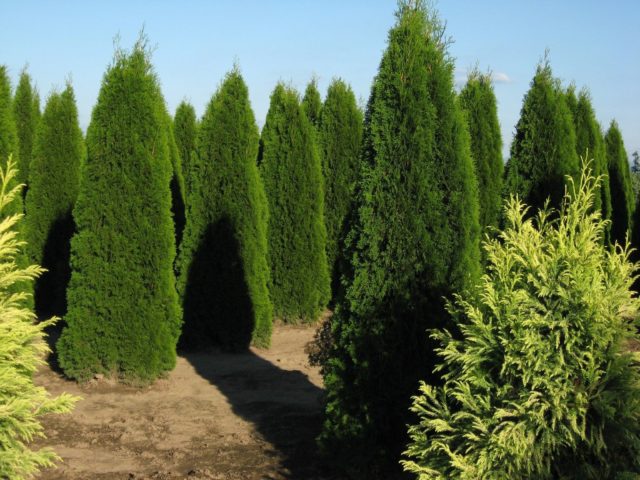
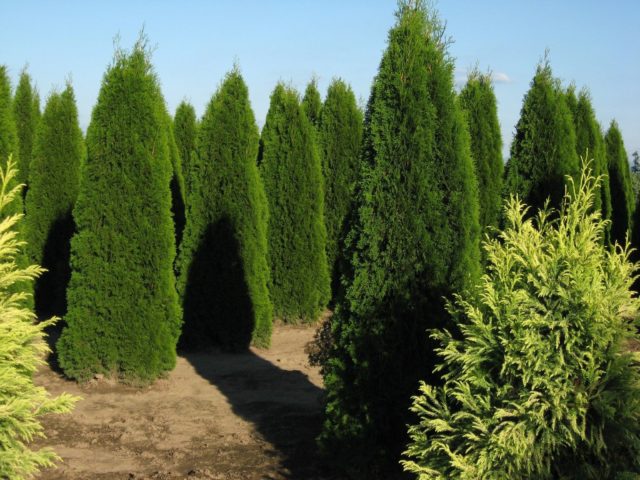
Thuja is not recommended to grow on nutritious soil.
How to transplant a big thuja
Transplanting large thujas is performed according to the following scheme:
- 4 months before the operation, it is necessary to dig a hole, which should be 60 cm larger than the earthen clod of the tree.
- Three weeks before transplanting, the bottom of the pit should be covered with humus (300 g) and wood ash (100 g). Then pour water into it and lay the soil (peat and river sand – 300 g each), it is also advisable to add phosphorus-potassium fertilizers. It is allowed to use chipped bricks or stones as drainage.
- On a cloudy day, dig up a tree together with an earthen lump, retreating from the roots by 50 cm. You can remove it from the soil using a pitchfork. It is better to chop off strongly long roots, and then wrap them with burlap.
- Transfer the plant on a flat surface to the transplant site.
- Place the roots with soil in the planting hole so that they do not touch the fertilizer (the burlap can be left behind).
- Tamp thoroughly, getting rid of all air pockets.
- Water abundantly until the water stops going into the ground.
- Mulch the soil around the trunk.
Before rooting, it is recommended to water the transplanted thuja at least twice every 7 days.
Attention! Nitrogenous fertilizing cannot be added to the planting pit, since the growth of the green mass of thuja at this stage is undesirable.
A large plant must be transplanted by at least two people
How to transplant a small thuja
Transplanting young trees is usually not a problem. The procedure is carried out in almost the same way as is acceptable for large species, only with small bushes it is much easier to perform it, since it is usually done not from the ground, but from the pot.
The place for planting is chosen according to the rules for transplanting an adult plant, only with a certain amount of shading. For a small tree, the midday shade must be present. Also, during the first 2-3 years, young thuja needs diffused light. It is better to plant it in partial shade, otherwise you will have to close the shrub from the sun on your own.
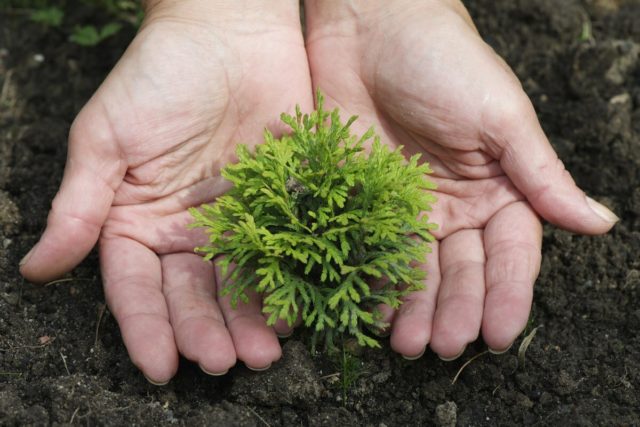

Transplanting a young plant has the same algorithm as planting an adult crop in a new place.
Basic rules of procedure
The procedure for transplanting thuja, however, like any other plant, requires adherence to certain rules. Before proceeding with the transplant, you need to decide on the most suitable place. The tree is very fond of the sun, but still it is impossible to plant it in an open area, where direct sunlight will fall on the plant and it will be under the gusts of wind all the time. The sun will cause thuja to burn and become dehydrated. It is especially undesirable to choose the area where the sun shines on the bush at noon. Draft and constant exposure to gusts of wind leads to plant disease and does not allow creating a lush crown. It is not recommended to land on the north side of the site.
The plant is unpretentious to the soil, but it is still recommended to prepare a nutritious soil mixture in advance. For this, river sand, peat, humus, rotted coniferous flooring, phosphorus-potassium fertilizers are used (added at will, their purpose is to promote better plant survival in a new place).
Next, you must definitely prepare the pit. It is advisable to dig it up at least 15-20 days before planting. Exception – plant transplantation is carried out within the same area. Then the hole can be dug directly on the day of transplantation. The pit should be about one meter deep.
The first layer of the hole is stones or chipped bricks. This is drainage. Then mix the prepared soil mixture thoroughly until smooth, and then pour it onto the bottom of the prepared hole on top of the drainage layer. It is advisable to make sure that the roots of the thuja do not touch the fertilizers.


Post-transplant care
After transplanting a tree, caring for it is carried out a little differently than for a long-planted plant, and consists in the following:
- Do not allow the soil to dry out. After transplanting, the thuja becomes vulnerable and during a drought it can lose its decorative qualities. The tree is moistened twice a week, and even more often if the weather is hot or dry. A couple of days after watering, the land around the bush is freed from weeds. They do this shallowly so as not to harm the root system located close to its surface. Twice a month, thuja needles need sprinkling. The procedure is performed using a conventional hose.
- You should not prune the tree in the year it is moved to a new location. It is better to carry out this procedure after a couple of years or next spring a few weeks before the start of the growing season.
- It is not necessary to feed the thuja after transplantation, but after a year, fertilization is already allowed. The first time this is done in May – with urea pura, the second time in July – with potash fertilizer. Phosphorus fertilizing is added only if the plant is very weak or the soil is very poor.
- After the first watering, it is necessary to mulch with coconut fiber or sawdust. This will provide the plant with additional protection and help its roots retain moisture longer. Mulch should be removed in stages, so the tree will be hardened and protected from damage by sunlight.
- Every month it is important to carry out prevention against diseases and pest attacks. To do this, spray the crown of the plant with insecticides and fungicides.
- With the arrival of autumn, thuja should be prepared for winter. To do this, their branches must be tied, but at the same time it is not necessary to press strongly against the trunk. This manipulation is carried out to avoid fractures under the weight of snow. If there is little rainfall in the fall, then the plant should be well watered before wintering.
- Three years after the transplant, the time for the introduction of dressings comes. Organic fertilizers should be applied several times a season. Once (in the spring) – mineral preparations.
Important! When sprinkled with thuja, they are saturated with moisture, and dust is washed off from their surface. In addition, watering with this method prevents the appearance of fungal diseases.
Within one to two years after transplantation, thuja cannot be cut off.
Growing from seed or using seedlings
Spring and autumn are suitable for planting a thuja seedling. The place for the plant needs to be open, but with shading at midday. Direct sunlight will damage the needles. It is important to plant the culture where there are no strong winds and drafts. The soil is selected nutritious, loose, with a sufficient content of peat and sand.
On a note! Shrub maintenance includes weekly abundant watering with sprinklers. The root system of a life tree is located close to the soil surface. Loosening must be done with a hoe. Pruning is shown only to adult shrubs that are 3-4 years old.
Thuja is propagated by seedlings purchased in a nursery or by seeds. If the seedling is not difficult to plant, then you will have to tinker with the seeds. It can take about 5 years until the seedling can be planted in open ground.
Seeds are harvested in mid-autumn – mid-September or early October. Store them until spring in a well-ventilated cloth bag. Before planting, soak in water or a special nutrient solution for 12 hours. After that, it is added dropwise to a depth of 5 cm and sprinkled with compost or peat. It must be foreseen that seed propagation may not repeat the maternal forms, and the plant will look different.
You can try to germinate roots in a cuttings taken from an adult plant at the beginning of the growing season – May June. The stalk should have a lignified shoot 7 – 8 mm wide and at least 12 cm long. It is better to cut from the lateral branches – they form roots faster than the apical ones. The stalk is left in water until the root appears. Then you can transplant it into a flower pot in a compost filler.
To accelerate root formation, longitudinal cuts are made along the cuttings and the needles and bark are removed. The cut is made obliquely. These procedures will help to avoid rotting of young roots under the bark. You can use a rooting stimulator, but you need to leave the cutting in such a liquid for no more than a day.
When planting thuja cuttings in pots in autumn or spring, they need to be placed in a warm room, well lit, so that the greens get used to the amount of light. Transfer to a large container is carried out as needed, when the root system fills the entire pot. After a few years, such a seedling is transferred to the street and transplanted.
Top dressing is carried out according to the rules: when planting, then a year later when transferring to a new place, and so on.
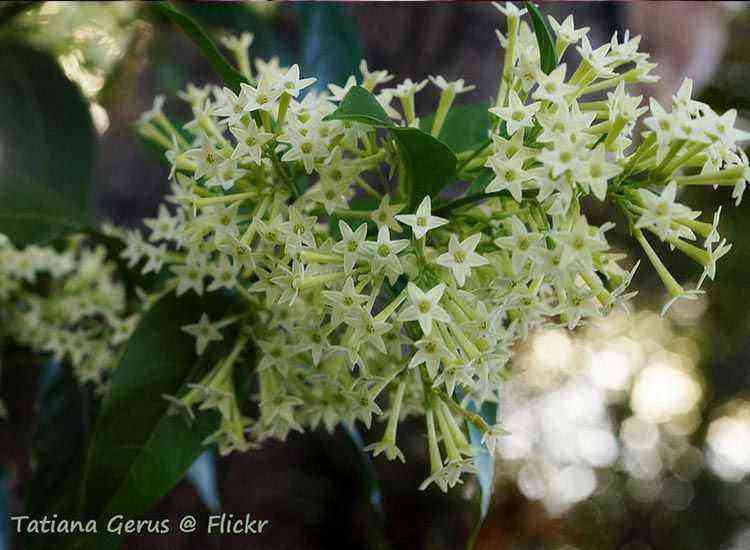




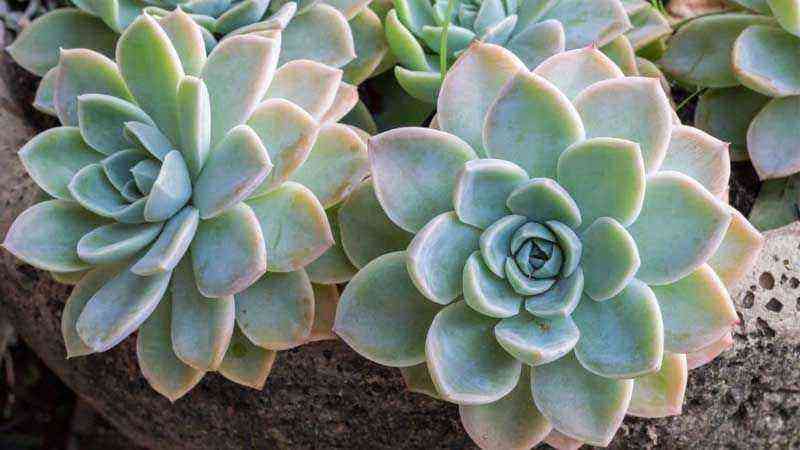


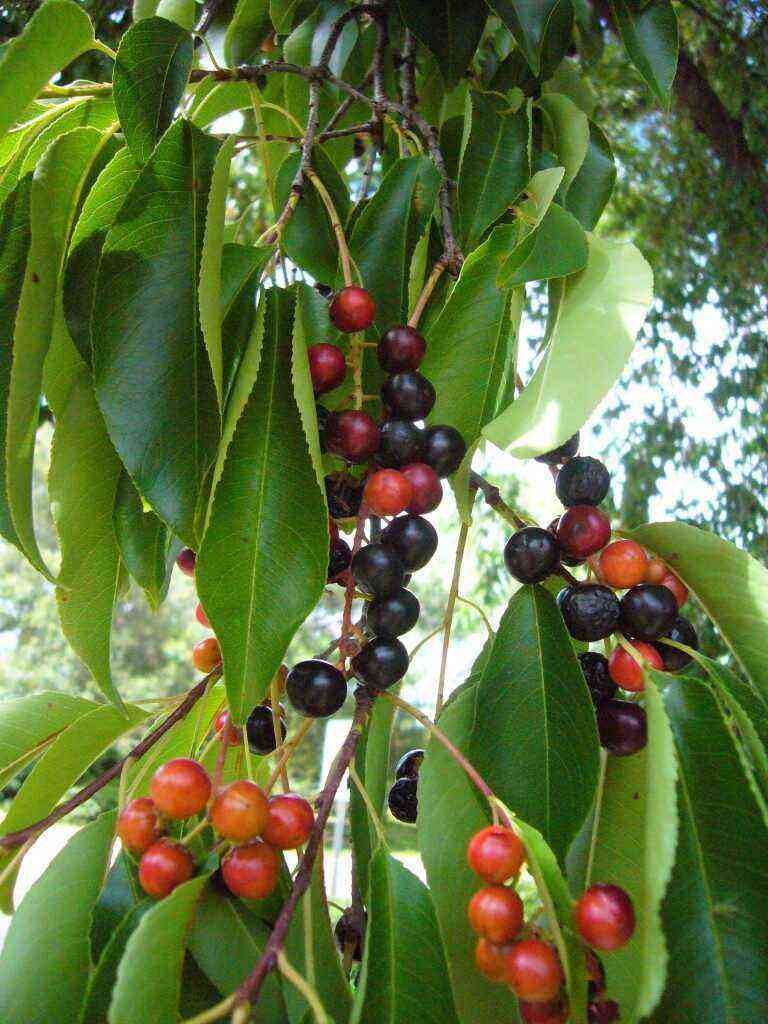
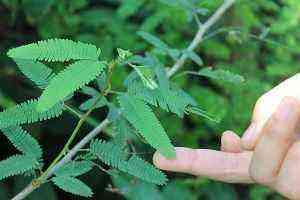


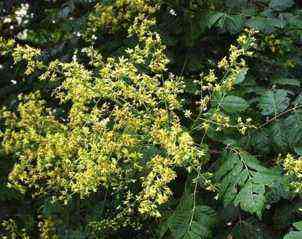
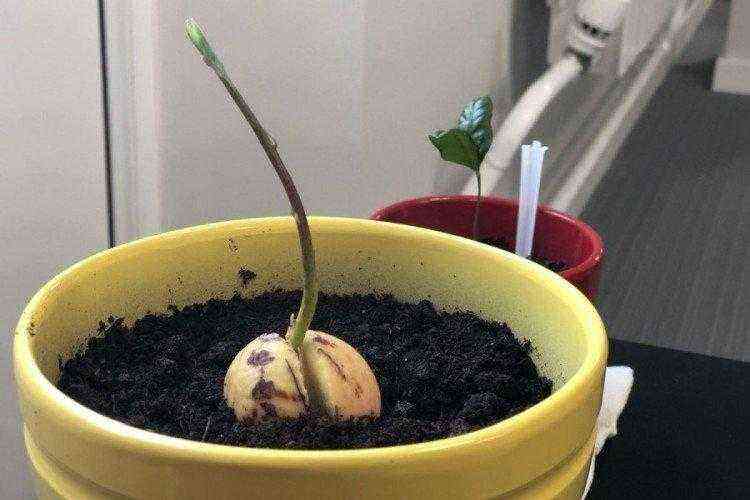

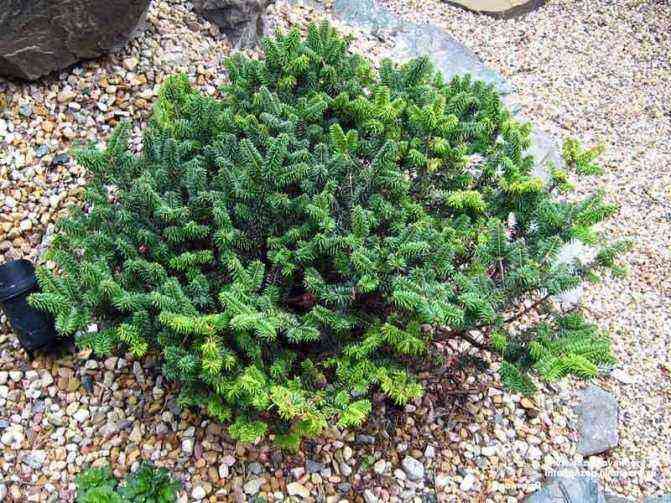
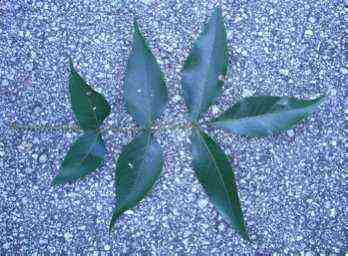
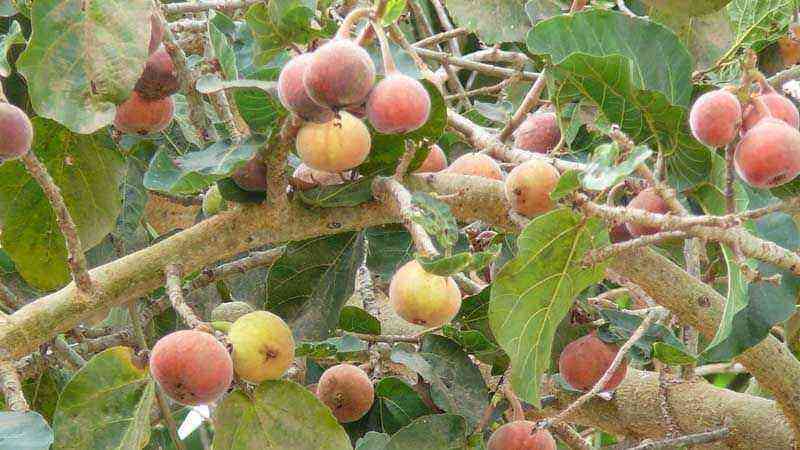
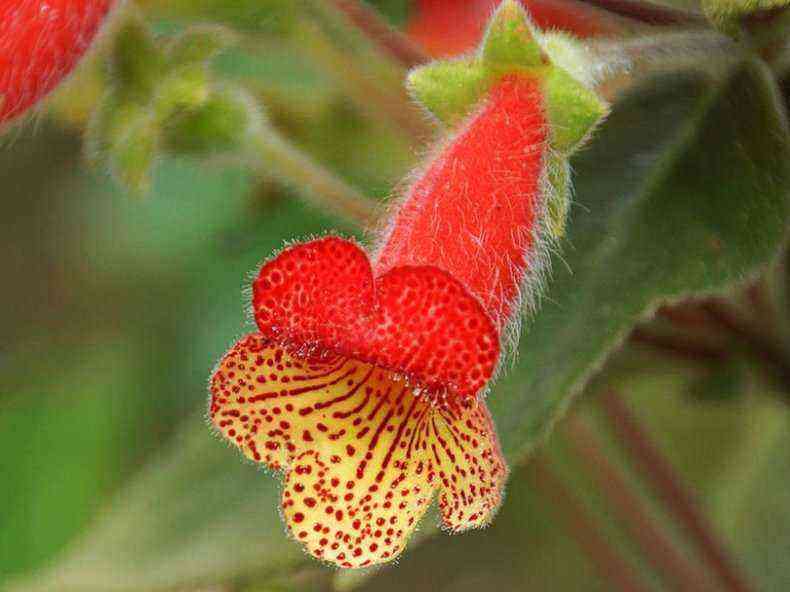
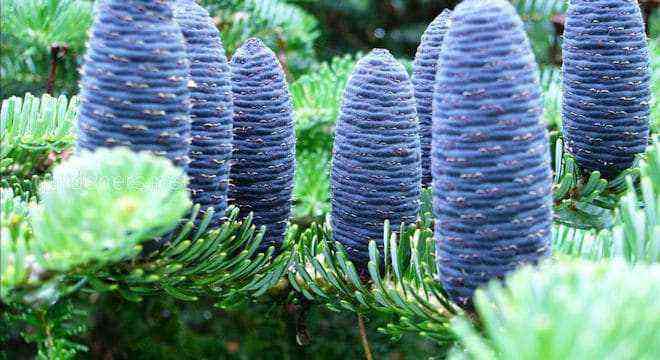
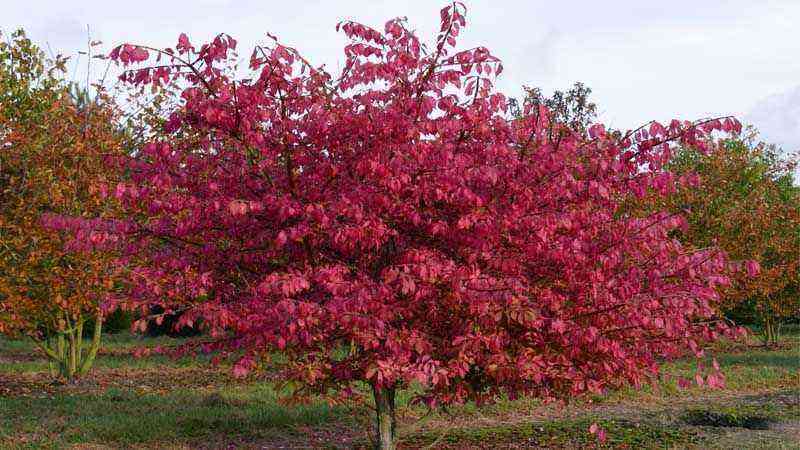
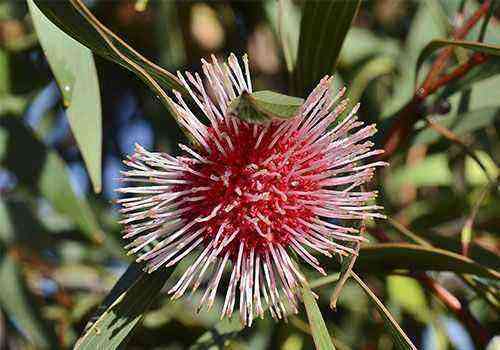
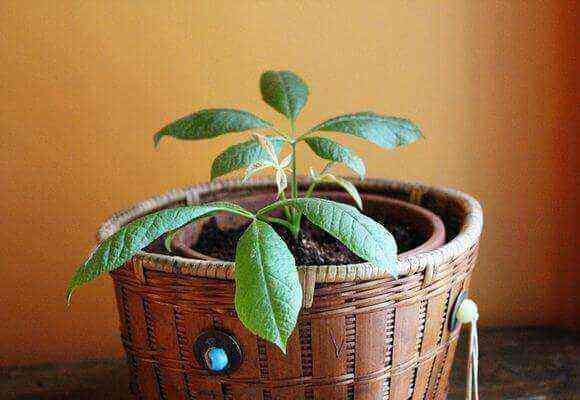
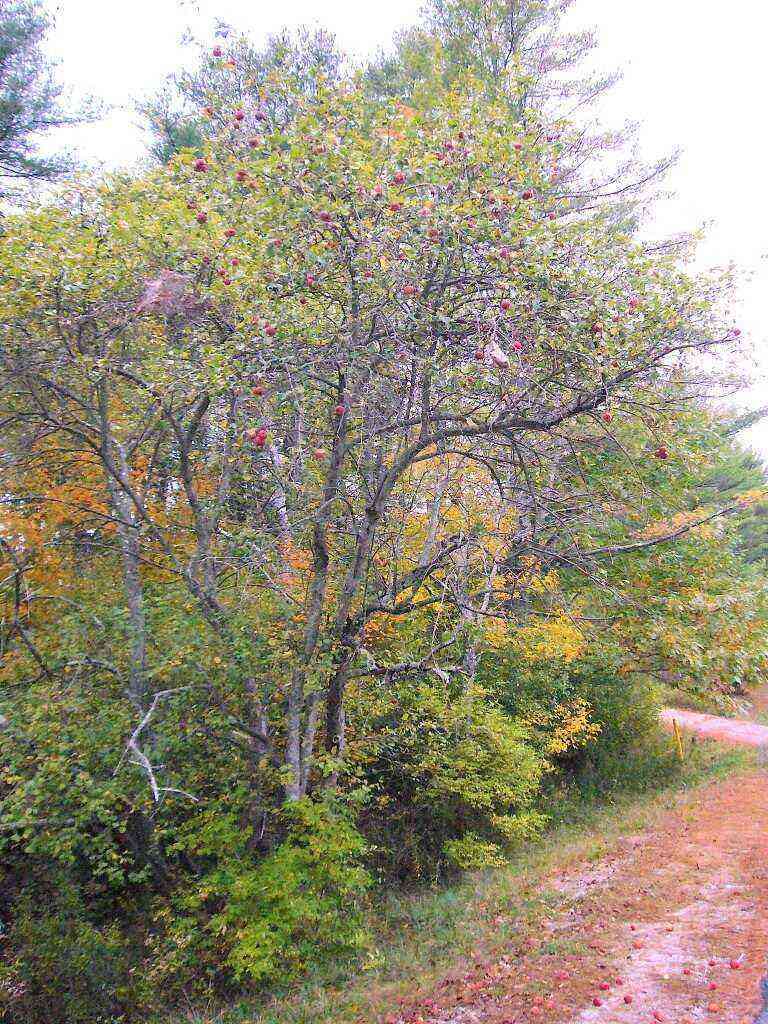
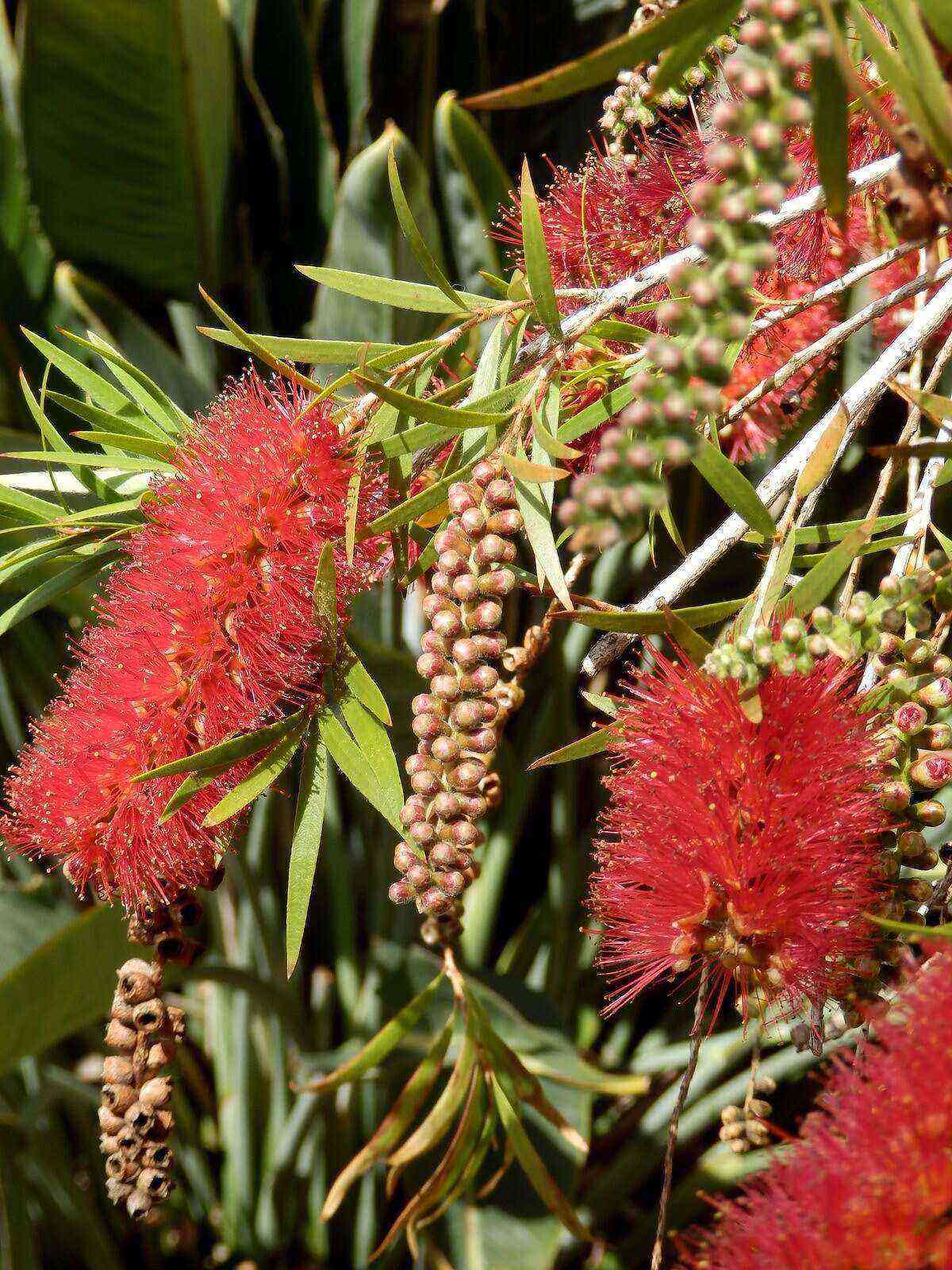
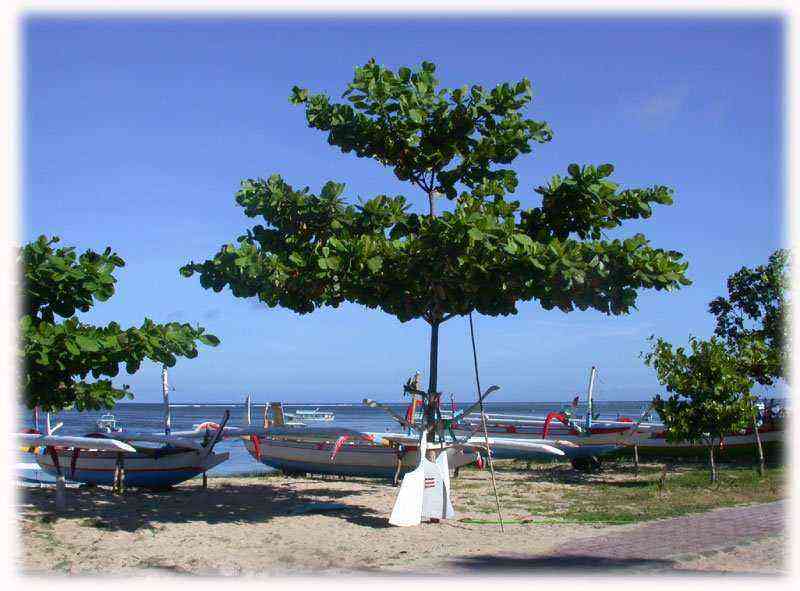

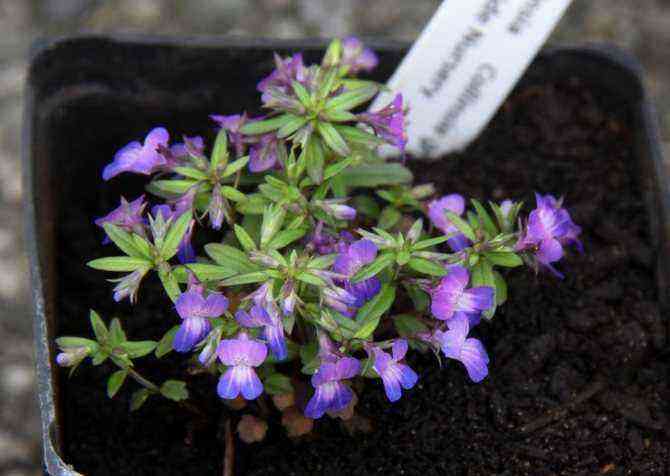
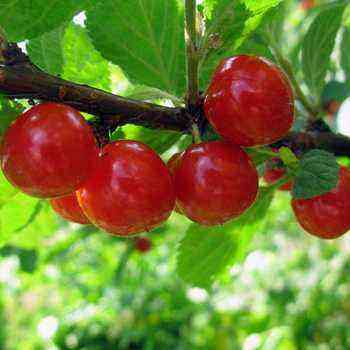
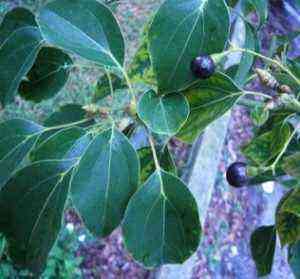
![Cultivo de Magnolia stellata [magnolia estrellada] Cultivo de Magnolia stellata [magnolia estrellada]](https://farmer-online.com/wp-content/uploads/2021/05/Cultivo-de-Magnolia-stellata-magnolia-estrellada.jpg)
